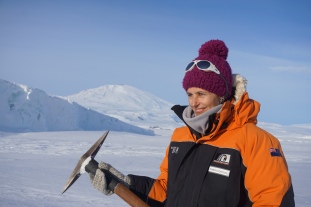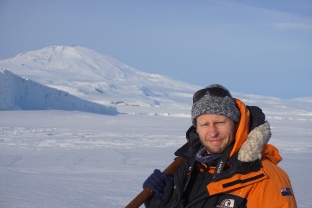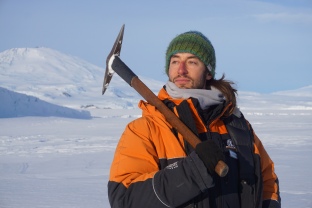
Our hats might be different, but we have a common interest : Glaciers
An increasing number of glaciers in Antarctica are accelerating, thinning and experiencing rapid ice loss, while others are remaining stable. Likewise, some ice shelves (the floating extension of the glacier) are thinning, driven by an increase in ocean temperature, and some have collapsed rapidly in the past, while others show no sign of change. Ice shelves and glaciers are linked by the grounding zone along the Antarctic coastline. We need to be sure that we understand the processes behind the transition from grounded to floating ice and how changing ice shelves may affect the glaciers that depend on them to predict ice sheet stability.
This is not an easy task and involves all our scientific expertise:

Oli Marsh is the Principal Investigator of our research project. He has been in Antarctica for several times already and will be responsible for using a new radar system (ApRES) to measure how melting of ice is occurring beneath the ice shelf. He is particularly interested in spatial and temporal changes of basal melting in the grounding zone.

Dana Floricioiu will support Oli with the installation of the radar system. She is also a specialist in remote sensing and has tracked cryospheric changes in Greenland and South America previously. She is happy to experience on-site what she has just seen from satellites so far.

Ekki Scheffler is a Masters student and mostly interested in how the tides affect the speed of the glacier. Understanding these short time ice dynamics are very important to interpret what Dana is seeing in her satellite images. He is using GPS stations on the ground to validate his results.
 I am interested in tidal flexure of ice shelves. The bending will be observed with a suite of high-precision tiltmeters distributed along a profile across the grounding zone. I would like to understand how the ice bends over daily and fortnightly cycles due to ocean tides. This will help to correctly interpret our satellite data.
I am interested in tidal flexure of ice shelves. The bending will be observed with a suite of high-precision tiltmeters distributed along a profile across the grounding zone. I would like to understand how the ice bends over daily and fortnightly cycles due to ocean tides. This will help to correctly interpret our satellite data.
Quick fact:
The satellites we are using can measure as little as 1cm movement of the ice from over 500km above the earth.

Really interesting scientific expedition.
I have read 3 or 4 of the blogs.
If this adventure ever becomes a book then maybe this info will be covered in the first chapter.
LikeLike